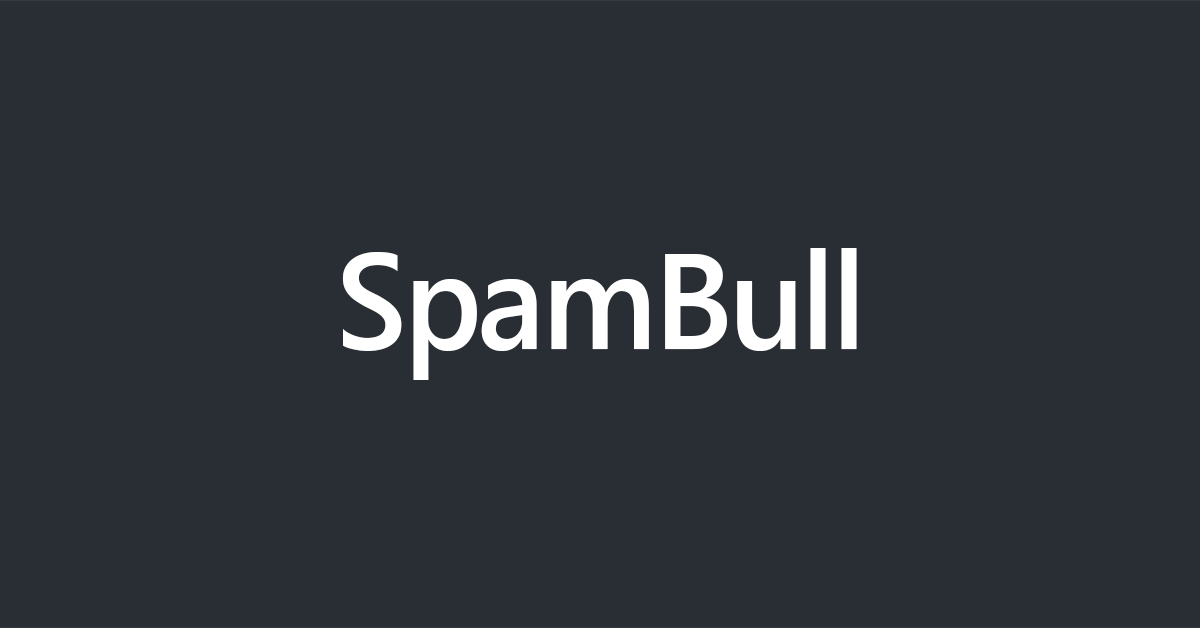When getting the login credentials to access SpamBull, it's only assigned to one person. If…
How to Blocklist Recipient
Regardless of the message classification, incoming mail sent to recipients on the Recipient Block list will always be blocked.
Adding a recipient to the Recipient Block list will not block mail from a given sender. To do this, please see How to Blocklist Incoming Sender.
- To access the Blocklist, you need to be logged in to the SpamBull admin center.
- In the left menu, expand the tab Incoming – Protection Settings.
- Click on Recipient block list.
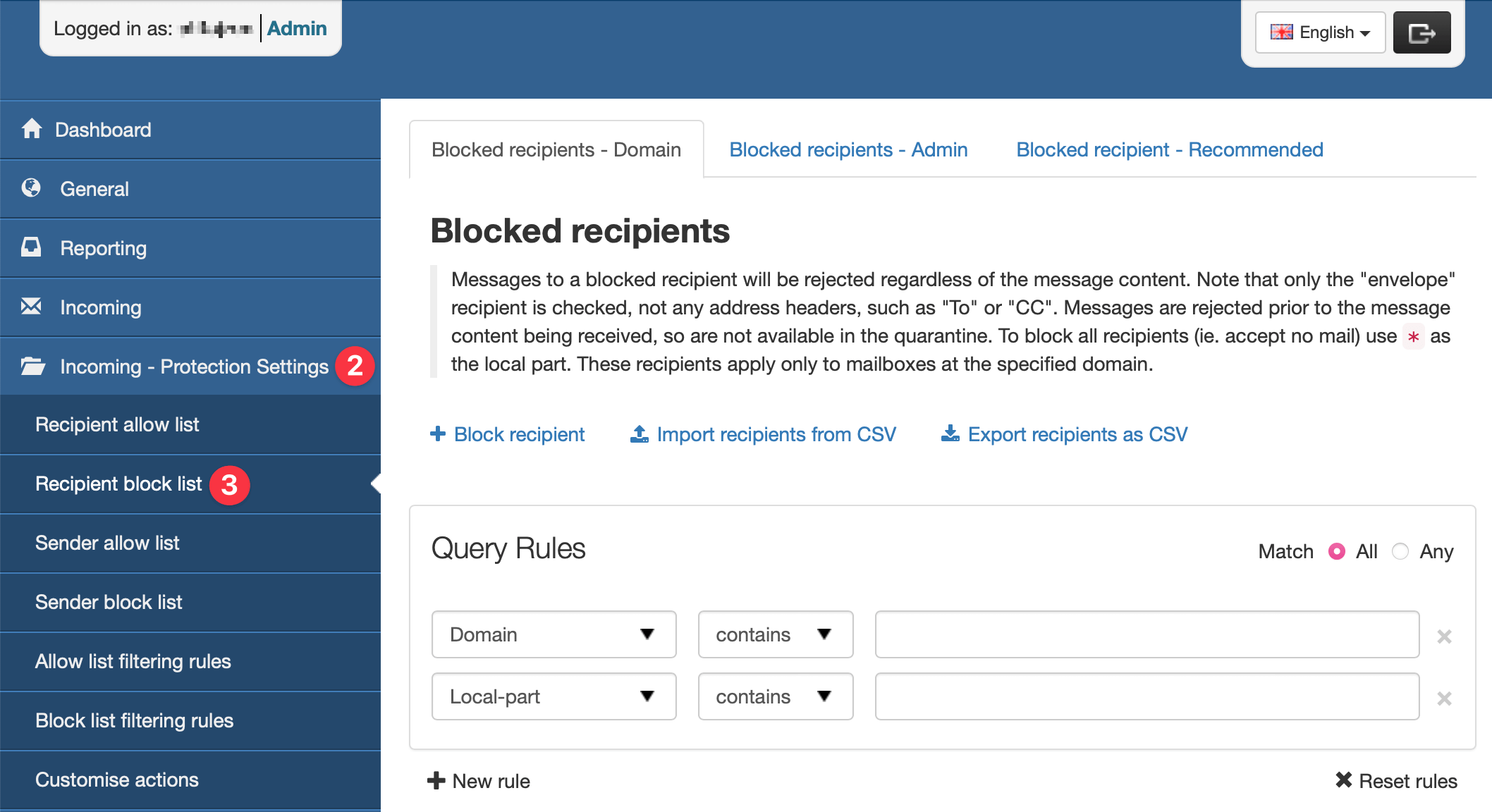
There are up to three tabs displayed, depending on the user level at which you are viewing the page:
- Blocked Recipients – Domain – This tab allows you to manage the recipients blocked for your domain. On this tab you can:
- Block recipient – Add a recipient to the Block list for the specific domain. See Blocked recipients – Domain tab.
- Import recipients from CSV – Import a list of recipients to add to the Block list for the specific domain via CSV file.
- Export recipients as CSV – Export the list of recipients to a CSV file.
- Blocked Recipients – Admin (only available when logged in at the Admin Level) – Anything applied on this tab applies to all domains for the selected Admin User. On this tab, you can:
- Block recipients – Add a recipient to the Block list for an Admin and subsequently all domains assigned to this Admin. See Blocked recipients – Admin tab.
- Import recipients from CSV – Import a list of recipients to add to the Block list via CSV file.
- Export recipients as CSV – Export the list of recipients to a CSV file.
- Blocked recipient – Recommended -This tab allows you to view any inherited blocked recipients that have been applied by a higher level admin.
Add Recipient to the Block list
Blocked recipients – Domain tab
- Make sure you select the Blocked recipients – Domain tab.
- Click on Block recipient to open the dialog.
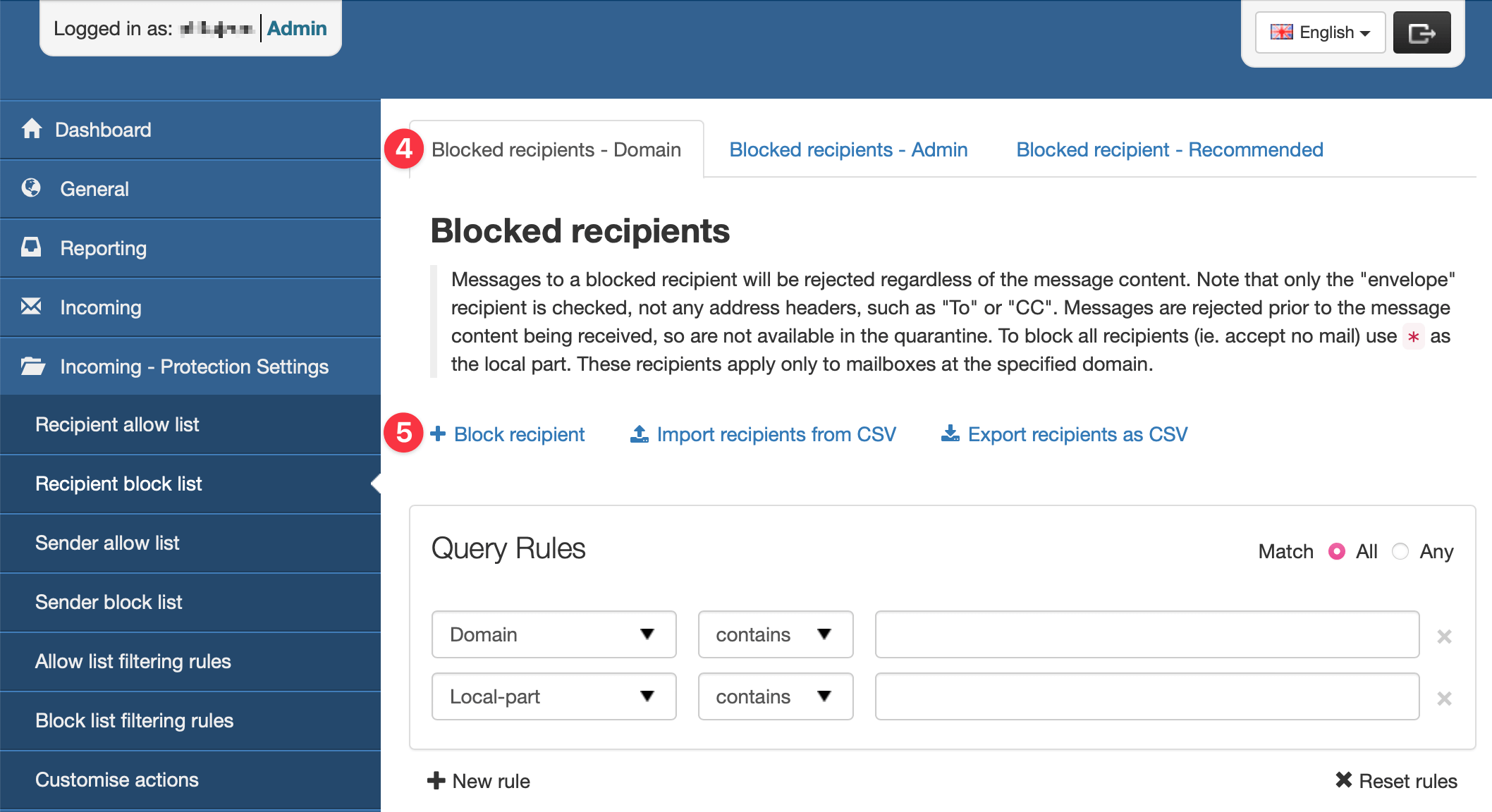
- If you are accessing this from the Admin Level, the Domain dropdown is displayed.
- Select the relevant domain in the dropdown menu.
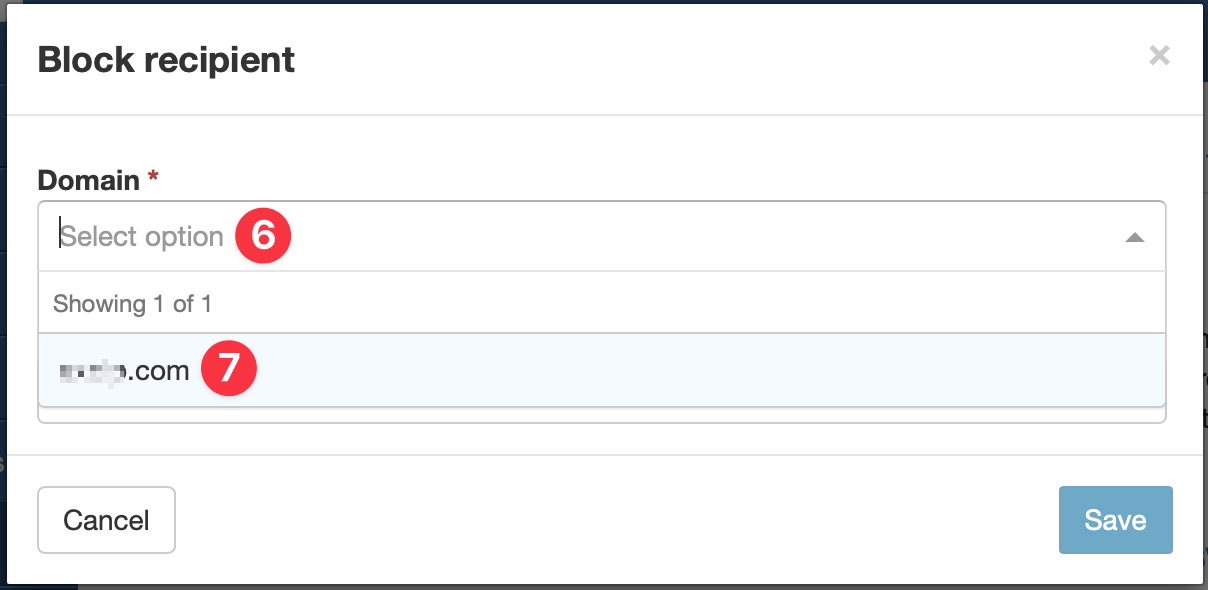
- In the Local-part field, specify the local-part of the recipient address.
To apply the entry to user1@mydomain.com, only enter user1 in the local part.
- Click on Save to add the recipient.
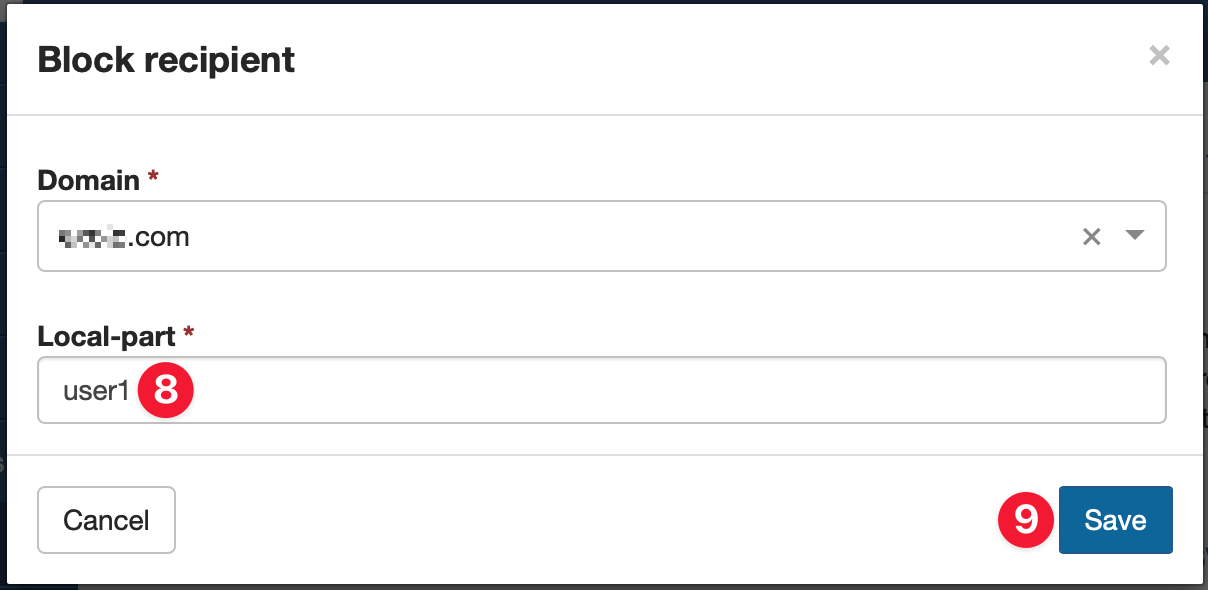
In this example, incoming emails to user1@mydomain.com will be blocked.
When the recipient is successfully added to the block list, it will be added to the table.

Blocked recipients – Admin tab
- Select the Blocked senders – Admin tab.
- Click on Block recipient to open the dialog.
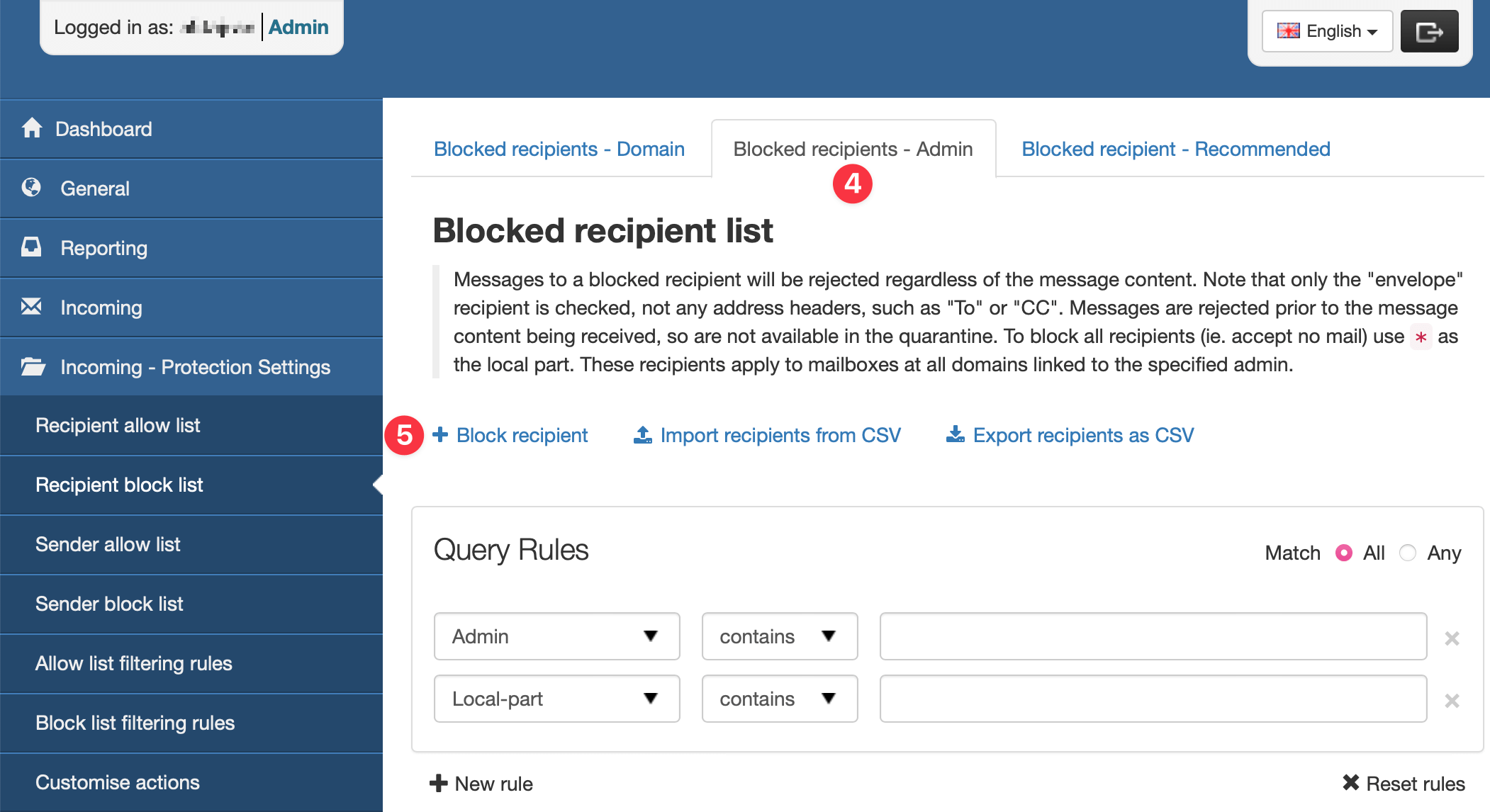
- The current Admin User is selected automatically from the dropdown menu. This means the blocked recipient will apply to all domains assigned to this Admin User. Select the right Admin User.
- In the Local-part field, specify the local-part of the recipient address.
To apply the entry to user1@mydomain.com, only enter user1 in the local part.
- Click on Save to add the recipient to Block list.
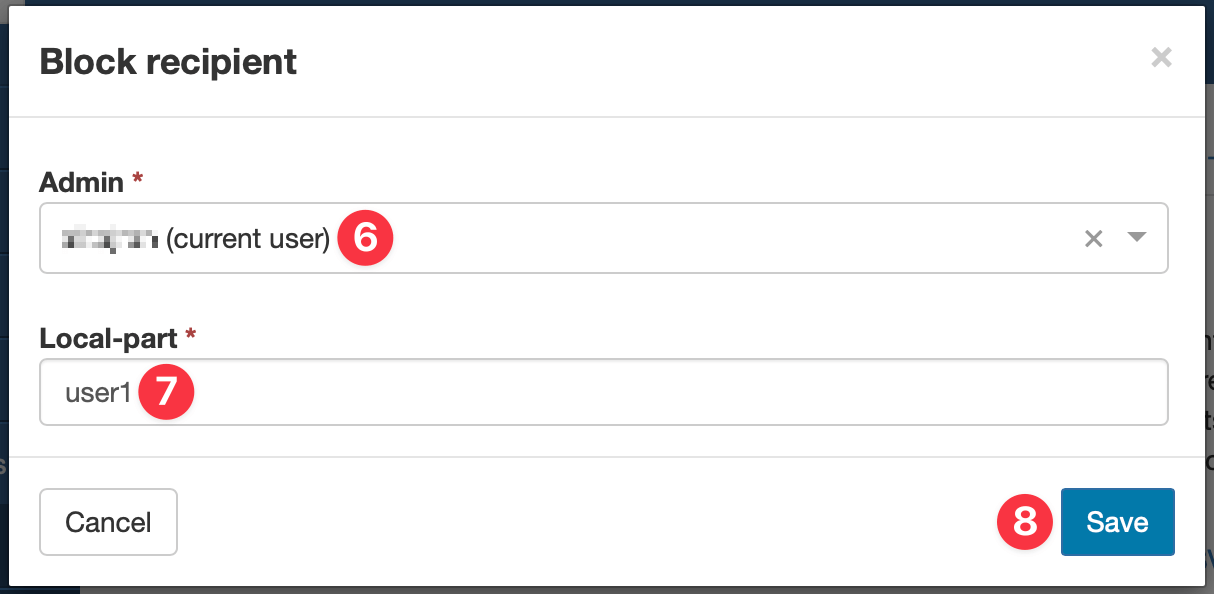
In this example, only emails to user1@mydomain.com sent from the current Admin user will be blocked.
When the recipient is successfully added to the Block list, it will be added to the table.

Edit Blocked Recipient
- Click the arrow to the left of the domain to open the action menu for the blocked recipient.
- Select the Edit to change any of the fields configured during adding.
If you Copy recipient, this will take you to add a new entry with the recipient address pre-filled from the existing entry.
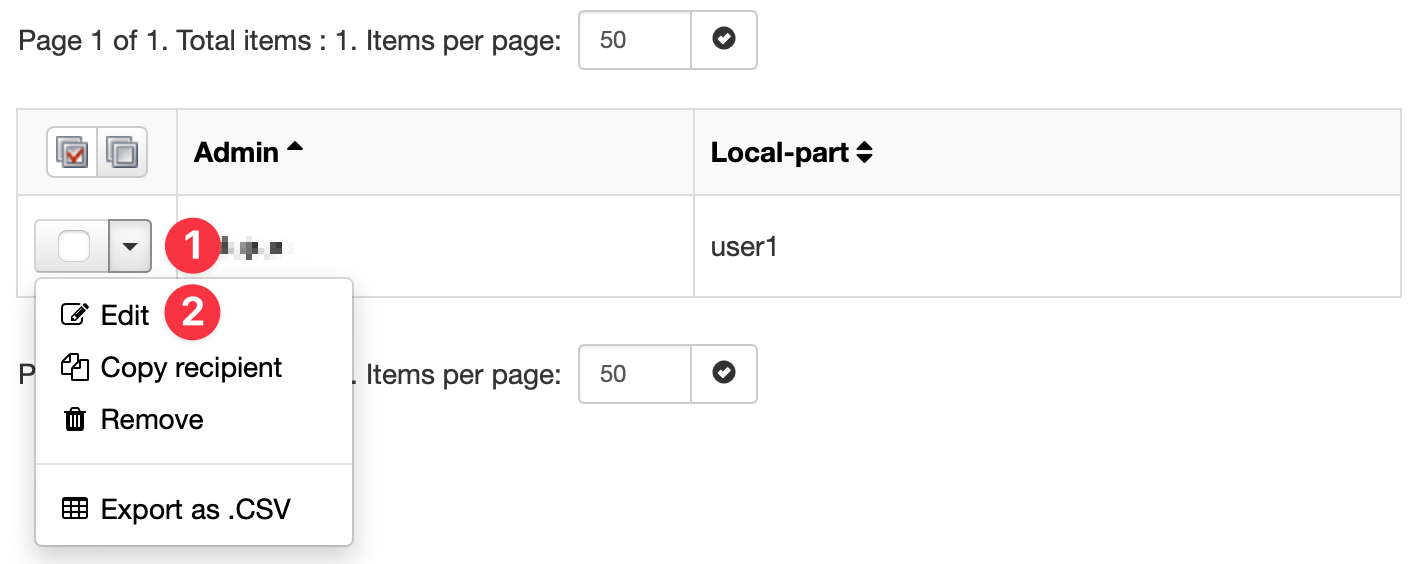
- Click on Save to edit the recipient.
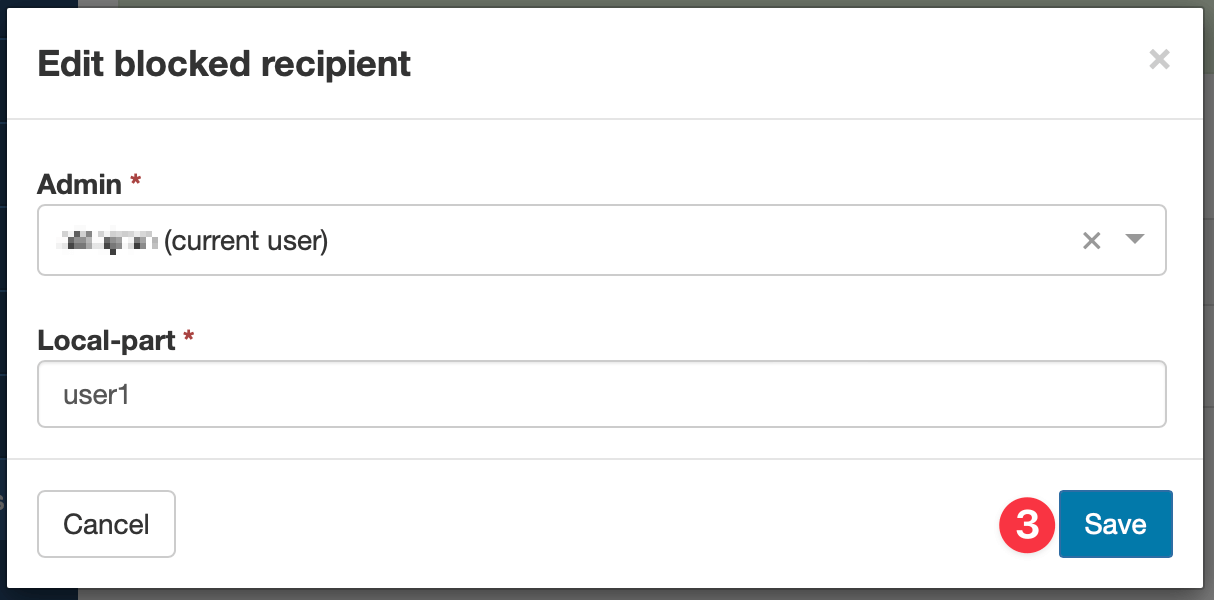
When done correctly, the message “Blocked recipient was successfully updated.” appears.

Remove Blocked Recipient
- Click the arrow to the left of the domain to open the action menu for the blocked recipient.
- Select the Remove button.
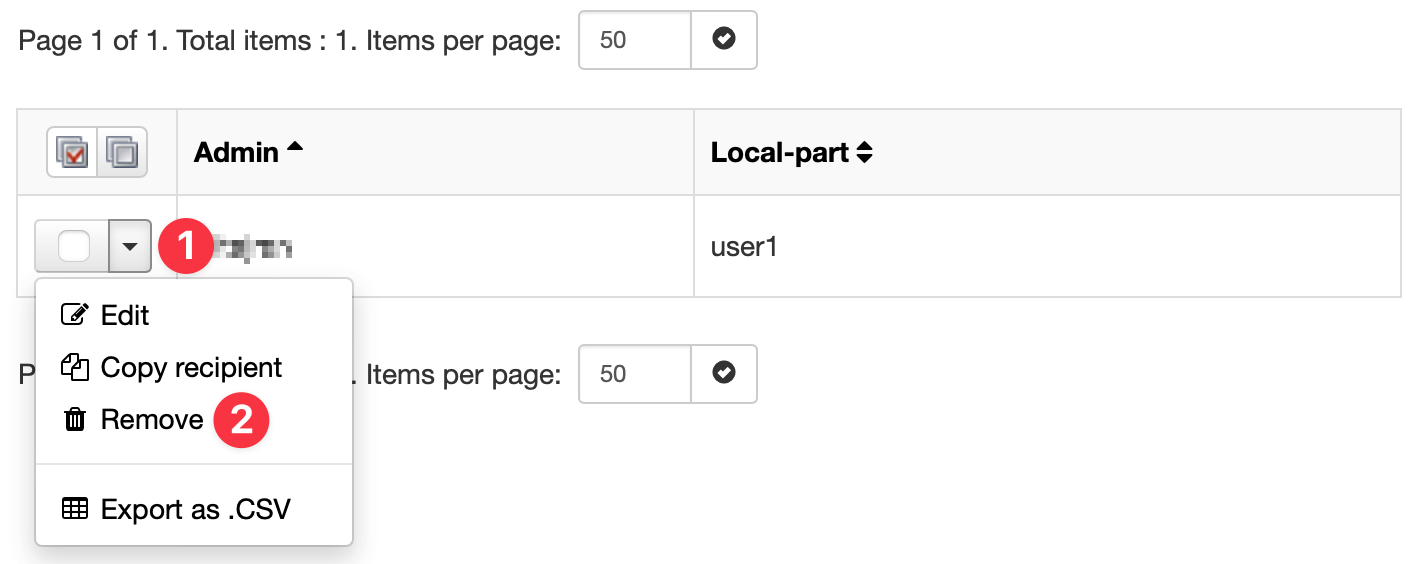
- Confirm removal of the blocked recipient by clicking the Remove button.
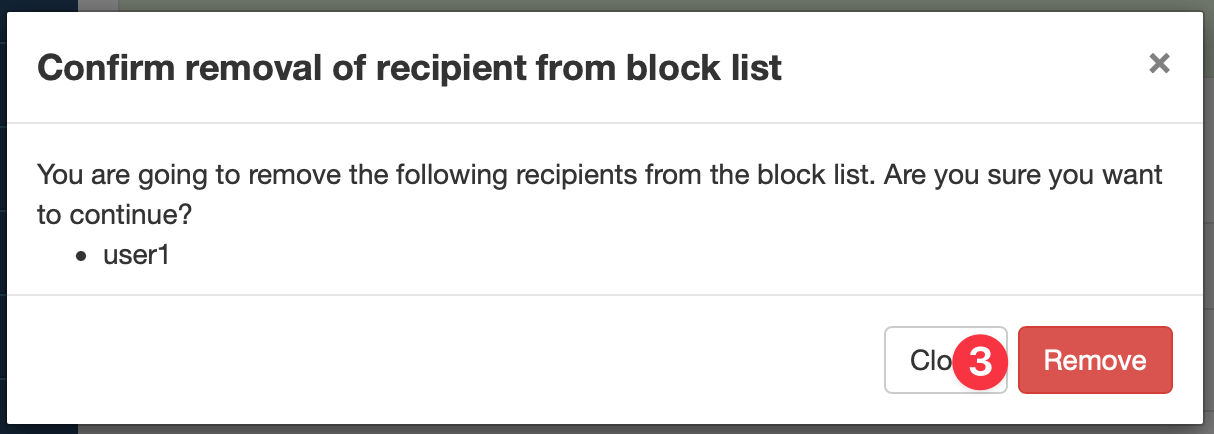
When done correctly, the message “Recipient was successfully removed.” appears.

